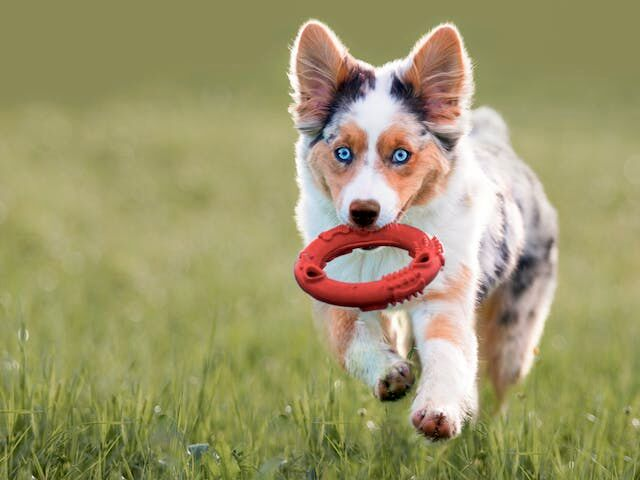How to prepare for your puppy's first walk
Article

When can your puppy go outside for the first time?
Young puppies have immature immune systems and are susceptible to serious diseases like parvovirus and distemper. Until your puppy is fully vaccinated, use a secured stroller or carrier to take them outside into the world. The smells, sounds and sights will fascinate and exhaust them even without their paws touching the ground.
Your puppy can venture outside with you (always supervised) into a secured area where no unfamiliar animals go. Taking your puppy out on a leash during toilet training or for short exploration adventures allows your puppy to get used to being on a leash early on.
Preparing your puppy for a successful first walk
There are various things you can do to prepare before your puppy’s first walk so that it is successful:
Try baby steps
Watch out for any distractions
Practice makes perfect!
Your puppy should walk on the lead without fighting it. Practice in your yard or inside the house before the walk so the puppy is comfortable with their collar, harness, or leash. Your puppy most likely won’t master this on their first walk.
Let your puppy set the pace
Don't expect your puppy's walking pace to be consistent. Puppies explore with their eyes, ears, nose and mouth (make sure to supervise what they pick up). Walking can quickly become frustrating if you expect your puppy to walk calmly beside you on their first excursions outside.
Be prepared
Try baby steps
Watch out for any distractions
Practice makes perfect!
Your puppy should walk on the lead without fighting it. Practice in your yard or inside the house before the walk so the puppy is comfortable with their collar, harness, or leash. Your puppy most likely won’t master this on their first walk.
Let your puppy set the pace
Don't expect your puppy's walking pace to be consistent. Puppies explore with their eyes, ears, nose and mouth (make sure to supervise what they pick up). Walking can quickly become frustrating if you expect your puppy to walk calmly beside you on their first excursions outside.
Be prepared
How to train your puppy to walk on a leash
When walking your dog on a lead there are things you should consider and incorporate so that the process feels like second nature to your puppy.

How often should you walk your puppy?
How often you should walk your puppy depends as the physical condition and stamina will vary based on breed.
The general rule of thumb for walks is five minutes for every month of your puppy’s age. However, it is important to watch for signs that your puppy is getting tired as you are walking them.
Typical signs of exhaustion include:
• Panting
• Yawning
• Loss of interest
• Refusing to walk further
• Licking lips
When your puppy shows these signs, it typically means you have over-walked them and you may need to carry them home as they are too tired.
Related articles
Like & share this page

